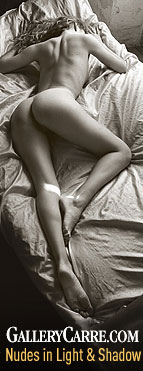Mr and Mr and Mrs and Mrs (London Review of Books)
Jun 16th, 2024 by Viviane
The Friend by Alan Bray · Chicago, 380 pp, £28.00
reviewed by James Davidson
In 1913, Turkish workmen restoring the Mosque of the Arabs in Istanbul uncovered the floor of a Dominican church. Among the gravestones was a particularly striking one in grey-white marble with pink and blue veins. Two helmets with slits for eyes faced each other, like a pair of beaky dolphins about, clangingly, to kiss: ‘Tomb Slab of an English Couple’, the label in Istanbul’s Archaeological Museum says.With its unprovocative title, its brass-rubbings and its frequent dippings into the nitty-gritty of Christian rites, Alan Bray’s last book,
The Friend, might not seem terribly exciting at first glance. And yet it is written in part as a defence of John Boswell’s Marriage of Likeness: Same-Sex Unions in Premodern Europe, which came out a decade ago, and in part as sequel to his own Homosexuality in Renaissance England, which came out a decade before that. Both were considered exciting events at the time.Boswell’s book, which I reviewed in the LRB (18 February 1996), centred on the liturgy of ‘brother-making’ or adelphopoiesis (‘bilateral – same-sex – sibling-making’) described in handbooks of Eastern Orthodox rites, which Boswell compared to heterosexual marriage ceremonies. It was headline-grabbing and old-fashioned looking, making much of primary documents ‘discovered’ in the archives, in proper Rankean manner. Reviewers, myself included, generally gave it a fairly hard time, and its central claim – that these same-sex unions sanctioned by the Church were analogous to heterosexual marriage rituals – had few takers among churchmen, historians or students of sexuality. Bray’s much shorter book had focused on the claim that ‘the sodomite’ was such a grotesque figure in Renaissance discourse that many men were quite surprised to discover it was a term that might apply to them for the kind of bum-fun they got up to with their bedmates on chilly winter nights. Full of subtlety and much admired, it has attained the status of a modern classic.
There is irony, therefore, in the late, cool Alan Bray riding, not without risk to his own reputation, to defend the late, uncool John Boswell. Or perhaps we had better view it as a gift, an expenditure of the symbolic capital Bray had accrued to breathe new life into a project considered dead in the water, a lavishing of his subtlety on a topic which had seemed in desperate need of some.
Which is a way of saying that I have changed my mind about Boswell’s thesis, and that it is Bray’s subtlety that converted me. Boswell, it’s beginning to seem, was on the right track; his overly gay interpretation of same-sex unions is less misleading than the loveless ‘anti-gay’ alternatives offered by his critics. For a very long period, formal amatory unions, conjugal, elective and indissoluble, between two members of the same sex were made in Europe, publicly recognised and consecrated in churches through Christian ritual.
They were never identical to heterosexual marriages – in societies in which gender differences were so significant, how could they have been? – but were often implicitly or explicitly compared to and contrasted with heterosexual marriages, and were by no means considered to come off the worse for the comparison. Indeed, as partnerships entered into by individuals acting as autonomous agents out of love for each other, same-sex weddings are much closer to modern companionate marriages than the heir-centred, family-allying and often family-arranged marriages of former times. In historical perspective, a love for someone greater than love for life itself, a love that obliterates the mundane world, wife, property, nation, children, is most typically a feature of the discourse of a same-sex lover. Which is why ‘would that all the Trojans died and all the Greeks as well, and you and I, Patroclus, alone survived to demolish Troy’s holy crenellations’ were considered by ancient commentators just about the gayest lines in the Iliad.
Bray was concerned that his book be seen not merely or not at all as an argument in favour of (the antiquity of) ‘gay marriage’, but
The Friend is not merely about friendship either, and by the end of it I found my thoughts turning to some topics I had not anticipated: the traditionalism of the English, the British social security system, the origins of the state, and the manicure of an Egyptian pharaoh of the middle of the third millennium bce.
Technorati Tags: books, gay, gay marriage, history







 Gallery Carre
Gallery Carre

